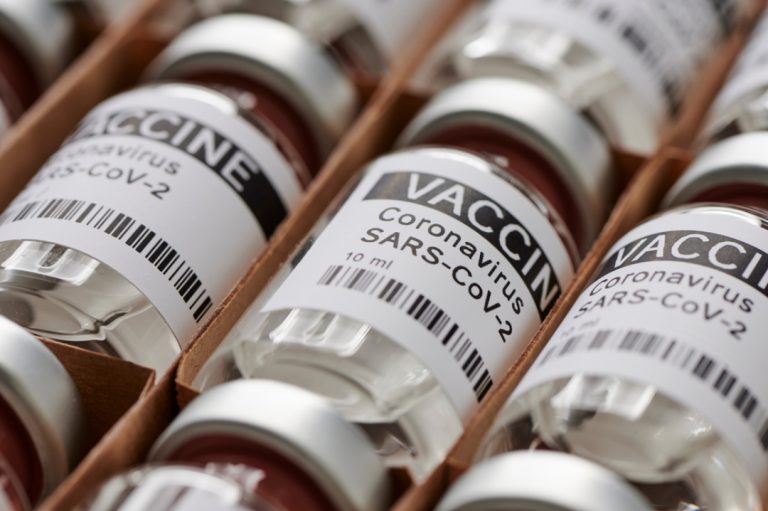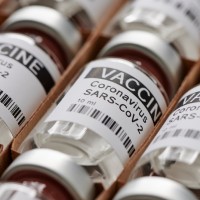Study Revealed How COVID-19 Infection Can Cause or Worsen Diabetes
On Sept. 13, 2024, researchers from Weill Cornell Medicine have used a cutting-edge model system to uncover the…

On Sept. 13, 2024, researchers from Weill Cornell Medicine have used a cutting-edge model system to uncover the…

On Sep. 13. 2024, Novavax announced that doses of the Novavax COVID-19 Vaccine, Adjuvanted (2024-2025 Formula) (NVX-CoV2705) to…

On Sept. 13, 2024, CSL Seqirus and sa-mRNA pioneer Arcturus Therapeutics announced that Japan’s Ministry of Health, Labor…

On Sep. 9, 2024, Santo Fortunato, a professor at Luddy School of Informatics, reported that an international research…

On Aug. 30, 2024, Novavax announced the Novavax COVID-19 Vaccine, Adjuvanted (2024-2025 Formula) (NVX-CoV2705) had received Emergency Use…

On Aug. 29, 2024, a small team of scientists has launched an open-source database for some of the…

On Aug. 28, 2024, survey data from the Annenberg Public Policy Center (APPC) found that the number of…

On Aug. 22, 2024, Pfizer and BioNTech announced that the U.S. Food and Drug Administration (FDA) had approved…

On Aug. 16, 2024, the U.S. Centers for Disease Control and Prevention (CDC) reported that COVID-19 infections are…

On Aug. 8, the World Health Organization (WHO) announced results of a study that showed the introduction of…

On Aug. 6, 2024, a team of researchers, led by the University of Houston, announced they had discovered…

On Aug. 6, 2024, the University of Pennsylvania announced it had sued German biotechnology firm BioNTech n Pennsylvania…

On Aug. 1, 2024, the Coalition for Epidemic Preparedness Innovations (CEPI) and the World Health Organization (WHO) called…

On Jul. 24, 2024, the University of Hong Kong released a study that showed hospitalized COVID-19 patients treated…

On Jul. 24, 2024, a team led by researchers at Cornell University announced a study that provides evidence…

On Jul. 2, 2024, Moderna announced a project award of $176 million through the Rapid Response Partnership Vehicle…

On Jun. 27, 2024, the U.S. Centers for Disease Control and Prevention’s (CDC) recommended the updated 2024-2025 COVID-19…

On Jun. 11, 2024, the National Academies of Sciences, Engineering, and Medicine released a new report that stated the…

On May 29, 2024, BioNTech and the Coalition for Epidemic Preparedness Innovations (CEPI) announced they were expanding their…

On May 24, 2024, the World Health Organization (WHO) revealed that the COVID-19 pandemic reversed the trend of…

On May 17, 2024, researchers at Washington University School of Medicine in St. Louis announced a study had…

On May 10, 2024, Novavax announced that it had entered into a co-exclusive licensing agreement with Sanofi. The…

On May 10, 2024, the National Academies of Sciences, Engineering, and Medicine reported that the COVID-19 vaccines made…

On Apr. 22, 2024, Moderna announced a contract with the Ministry of Health in Brazil (Ministerio da Saude)…

On Mar. 22, 2024, the U.S. Food and Drug Administration (FDA) issued an emergency use authorization for Pemgarda…

On Mar. 20, 2024, a National Institutes of Health-supported study reported that SARS-CoV-2, the virus that causes COVID-19,…

On Mar. 14, 2024, the Institute for Health Metrics and Evaluation (IHME) released all-cause mortality, life expectancy, and…

On Feb. 28, 2024, the U.S. Centers for Disease Control and Preventionメs (CDC) Advisory Committee on Immunization Practices…

On Feb. 28, 2024, the CDC Advisory Committee on Immunization Practices’ (ACIP) announced a recommendation for adults ages…

On Feb. 22, 2024, the University of California, San Francisco (UC, San Francisco) launched the world’s first tissue…